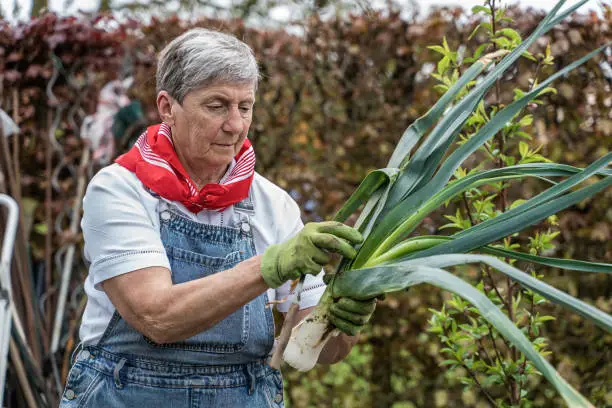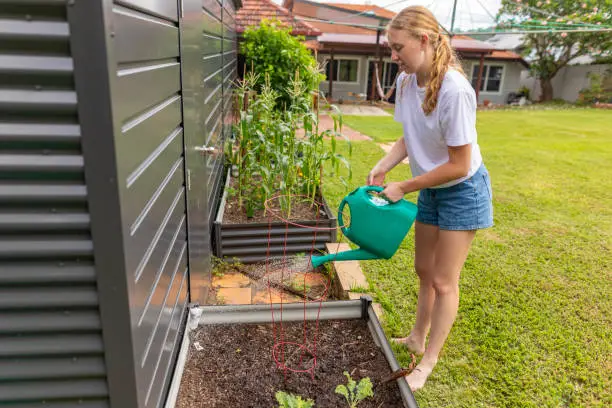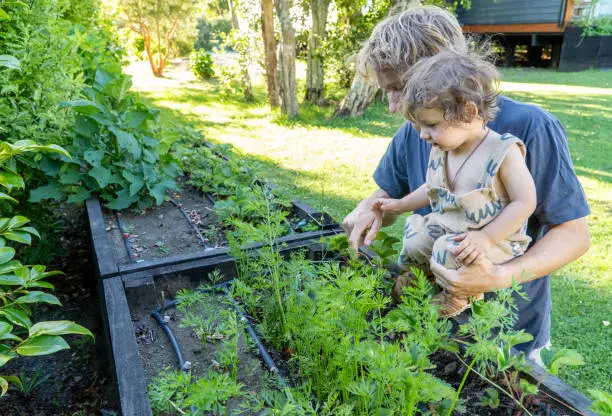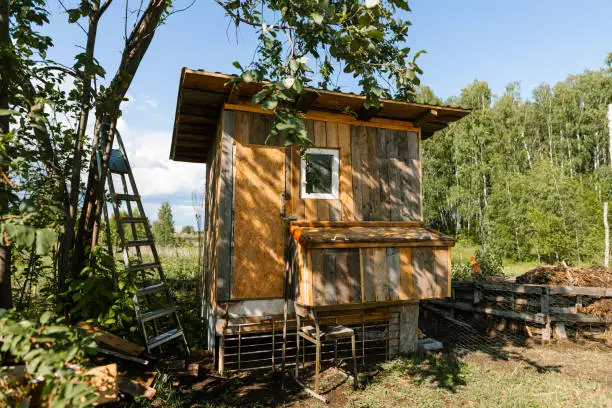Imagine entering your property to see beautiful, self-sustaining vegetation that almost cares for itself. That sounds like a dream. Permaculture can make that dream come true. Design a permaculture garden for your backyard homesteading.
First, know your space. Explore your yard at different hours, observe sunlight and shadows, and check for windy and protected regions. These findings will help you decide what and where to plant.
Next, soil health. Plants thrive in good soil. Use a garden store kit to test soil pH. No worries if it’s excessively acidic or alkaline! To balance it, add compost or other organic debris.
Create a compost! Nature recycles kitchen and yard trash into nutrient-rich plant food. It reduces waste and nourishes soil without synthetic fertilizers.
Discuss water management. In permaculture, every drop matters. Consider roof runoff collection using rain barrels. During droughts, this free water source is ideal for gardening.
Permaculture requires careful plant selection. Select native species since they thrive in local conditions and require less care. Use perennials and annuals to keep the garden fruitful year-round without replanting.
Have you ever heard of companion planting? It’s an ancient trick: certain plants grow better together. For example, when planted together, tomatoes and basil taste delicious and repel pests.
Mulching is another permaculture secret. Straw or wood chips can be used as mulch around plants to retain moisture, discourage weeds, and gently replenish soil nutrients.

Divide your garden into zones by frequency of visit. Keep high-maintenance plants like herbs and vegetables you use daily near your home. Fruit trees and berry bushes farther away require less care.
Remember vertical space! Climbing beans and cucumbers need trellises or arbors, which save ground space and beautify your garden.
Animals contribute! Chickens produce eggs and compostable dung while controlling pests. Bees are excellent pollinators and improve plant productivity.
Polyculture, not monoculture, is vital in permaculture gardens! Ecosystems support species through nutrient exchange and pest control.
Although maintenance may seem onerous initially, following these principles makes life more accessible over time than traditional approaches, which require continual intervention!
Finally, be patient—Rome wasn’t built overnight, and your backyard paradise won’t develop soon. Enjoy learning, adapting, and watching the fruits of your labor come true!
So there are some valuable tips. Start constructing your sustainable sanctuary at home with joyful gardening. Enjoy the journey until next time, and happy homesteading!
How to Integrate Animals Into Your Backyard Permaculture System From Chickens to Goats
You want to turn your garden into a permaculture paradise. “Why not add some animals to the mix?” Smart move! Your farm may need animals to be excellent. But where to begin? Jump right in.
Start with chickens. These feathered companions are backyard-farming Swiss Army knives. They provide eggs, insect control, and fertilizer from their droppings. Don’t just throw them in and hope for the best. Chicken tractors—mobile coops that protect your hens from predators—let them graze on fresh grass. Additionally, it keeps your lawn sharp without extra effort.
Discuss ducks. Ducks, unlike hens, love water and can control garden pests without damaging plants. A little pond or kiddie pool can please them. And guess what? Duck eggs bake well!
Permaculture may not immediately conjure rabbits, but they’re good poop machines! Nitrogen-rich rabbit manure doesn’t need composting before going into vegetable beds. Rabbits are silent and compact.
Goats are like a talking lawnmower! Goats eat weeds and brush; other animals won’t. They also provide milk for light dairy farms. Goats are escape artists. You need solid fencing, or they’ll explore the area faster than you can say “cheese.”
Permaculture can also accommodate sheep if space allows. Sheep are great for mowing large amounts of grass, and their wool can be used for textile arts.

Remember bees! Although they aren’t lovely, they pollinate plants, increasing garden yields. A few hives in a corner can make all the difference.
How do we combine these creatures without chaos? Zoning—designating zones for each animal’s needs and behaviors—is crucial.
Zone 1 should comprise hens and bunnies that need daily care and are closest to your home.
Goats and sheep, which need less care but still need connection, could live in Zone 2.
Bees and other autonomous species may live in Zone 3.
This zoning simplifies tasks and pleases everyone.
Rotate pastures to avoid overgrazing and soil loss. Rotational grazing mimics natural animal migration, allowing pastures to recover.
Regarding recovery, consider multi-species grazing! Different animals prefer different forages, so they get along in pasture.
Have you heard of IPM? This fancy term means employing natural predators instead of pesticides to control pests in permaculture systems, which works great! Chickens eat insects; ducks eat slugs and snails in moist locations.
My friend Sarah had such a horrible aphid problem that she almost gave up gardening until she added ladybugs and free-range hens at specific times of the day. Her plants recovered better than ever!
But it’s not all rainbows and sunshine. Learning to integrate animals into permaculture takes trial and error!
For instance, goats adore young fruit trees without wire mesh barriers around their trunks (ask me how I know). Those cute rabbits may become Houdini-like escape artists if cabinets aren’t secured against tunneling under fences.
Adapting plans based on voyage experiences and making required revisions are the goals of not giving up.
Finally, community is crucial to assimilation. Link nearby farmers’ markets Join online forums Attend workshops and share advice Learn from others’ experiences. Discover helpful insights support network ready to aid when needed.
Imagine walking onto your land to find lush, self-sufficient plants. Permaculture can fulfill that dream. Know your space. Visit your yard at different times, observing sunlight, shadows, and breezy and protected areas. These findings will guide your planting choices.
Next, soil health. Plants like good soil. Test soil pH with a garden shop kit. No worries if it’s too acidic or alkaline! For balance, add compost or organic detritus.
Make compost! Nature turns kitchen and yard waste into plant food, reducing waste and fertilizing soil without synthetic fertilizers.
Discuss water control. In permaculture, every drop counts. Consider rain barrels for roof runoff. This free water source is excellent for gardening during droughts.
Plant selection is crucial in permaculture. Choose native species that thrive locally and require minimal care. Perennials and annuals keep the garden fruitful year-round without replanting.
Mulching is another permaculture secret. Mulching with straw or wood chips retains moisture, deters weeds, and slowly replenishes soil nutrients.
Permaculture requires animals! Chickens manage pests and provide eggs and compostable excrement. Ducks enjoy water and manage garden pests without harming plants. For light dairy farms, goats eat weeds and produce milk. Bees pollinate and boost plant yield.
Zone your garden by visit frequency. Maintainable plants like daily-used herbs and veggies should be near your home. Rotate pastures to prevent soil erosion and overgrazing.





Leave a Reply
You must be logged in to post a comment.